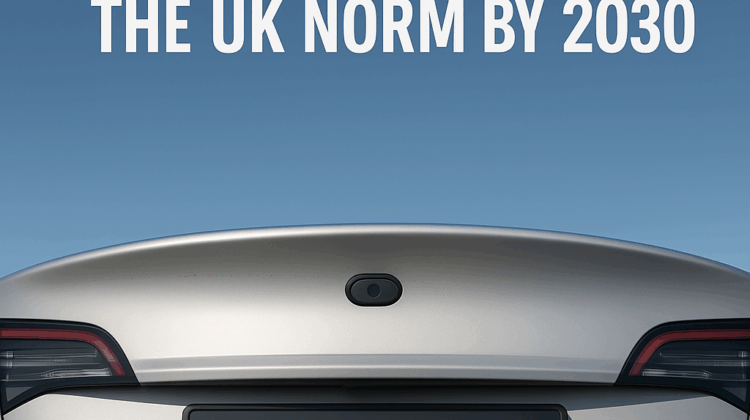
As the automotive industry accelerates into a digital future, one question looms large for motorists, manufacturers, and regulators alike: Will digital licence plates become the UK norm by 2030? With trials underway and smart technology reshaping how we interact with vehicles, the traditional acrylic number plate may soon face a high-tech challenger. But is the UK ready to embrace this transformation?
🚗 What Are Digital Licence Plates?
Digital licence plates—also known as electronic or smart plates—are high-tech alternatives to traditional number plates. Typically featuring an e-ink display, these plates can show the vehicle’s registration number, status updates (such as “stolen” or “uninsured”), and even custom messages when parked. They are often GPS-enabled and connected to a central database via mobile networks.
In countries like the United States and the UAE, digital plates are already in use. California, Arizona, and Michigan have approved them for road use, while Dubai has trialled smart plates with real-time tracking and emergency alerts.
🔍 The UK Landscape: Where Are We Now?
As of 2025, digital licence plates are not yet legal for general use on UK roads. However, the UK is not far behind. A British company called iPlate is currently developing the country’s first smart number plate, with features including:
- Live GPS tracking
- Tamper alerts and theft notifications
- Real-time insurance and MOT status display
- Red alert mode if the vehicle is reported stolen
- Data exchange via app in the event of an accident
The iPlate is undergoing testing and awaiting regulatory approval. If successful, it could pave the way for broader adoption across the UK.
Why the Push Toward Digital?
Several factors are driving interest in digital plates:
1. Enhanced Security
Digital plates can deter theft and cloning by integrating GPS tracking and tamper alerts. If a vehicle is stolen, the plate can display a red warning and notify authorities in real time.
2. Real-Time Compliance
Smart plates can sync with DVLA databases to instantly verify tax, MOT, and insurance status. This could help reduce the estimated 2.5 million uninsured vehicles on UK roads.
3. Fleet Management
For businesses, digital plates offer a streamlined way to monitor and manage large fleets. Real-time updates, geofencing, and automated compliance checks can significantly reduce administrative overhead.
4. Environmental Benefits
Some digital plates are made from recyclable or biodegradable materials, aligning with the UK’s net-zero emissions target by 2050.
The Challenges Ahead
Despite the promise, several hurdles stand in the way of widespread adoption by 2030:
Privacy Concerns
Digital plates raise questions about data security and surveillance. Constant GPS tracking could be seen as intrusive, and any breach could expose sensitive information such as vehicle location and ownership details.
Cost Barriers
Digital plates are significantly more expensive than traditional ones. In the US, a basic digital plate can cost £490–£600, with annual subscription fees for connected services. This could deter everyday motorists unless subsidised or mandated.
Infrastructure & Legislation
The UK would need to overhaul its vehicle registration infrastructure to support digital plates. This includes updating DVLA systems, training law enforcement, and passing new legislation to define their legal status and usage.
Reliability & Durability
Digital plates must withstand the UK’s varied climate and road conditions. Concerns about battery life, screen visibility, and electronic failures remain, especially in rural or extreme environments.
What the Experts Say
According to Regplates.com, the UK’s current number plate system is robust enough to last another 125 years with minor format adjustments. They argue that digital alternatives introduce unnecessary complexity and risk, particularly around hacking and privacy.
However, others believe that digital integration is inevitable. As vehicles become more connected and autonomous, static identifiers may no longer suffice. Smart plates could become essential for automated tolling, emissions tracking, and real-time law enforcement.
Will Digital Plates Be the Norm by 2030?
The answer depends on how we define “norm.” If we mean universal adoption, it’s unlikely. The UK’s regulatory pace, public scepticism, and cost barriers suggest that traditional plates will still dominate by 2030.
However, if we define “norm” as widespread availability and optional use, then yes—digital plates could become a common sight within the next five years. Early adopters such as fleet operators, tech-savvy motorists, and security-conscious drivers may lead the charge.
🛠️ What Needs to Happen Next?
To make digital plates a viable option by 2030, the UK must:
- Establish legal frameworks for digital plate use, including data protection and display standards
- Pilot government-backed trials to assess feasibility and public response
- Subsidise costs for early adopters or integrate digital plates into new vehicle sales
- Educate the public on benefits, risks, and usage
- Ensure compatibility with ANPR systems and law enforcement tools
Digital licence plates represent a bold step toward a smarter, more connected transport system. While they won’t replace traditional plates overnight, their potential to improve security, compliance, and convenience is undeniable.
For now, the UK remains in the exploratory phase—but with companies like iPlate leading the charge and growing interest from regulators, digital plates could become a mainstream option by 2030.

Jon Cherry is a Director of leading personalised number plate dealer Regplates.com. Jon has over 25 years industry experience handling some of the most expensive plates ever sold with many high profile and celebrity clients. Active since 1991 in the number plate industry, Jon is currently Chairman of the Cherished Numbers Guild, a trade body representing number plate dealers in the UK. Jon has written many articles on the industry and insight into the future of numberplates and the market as a whole.




